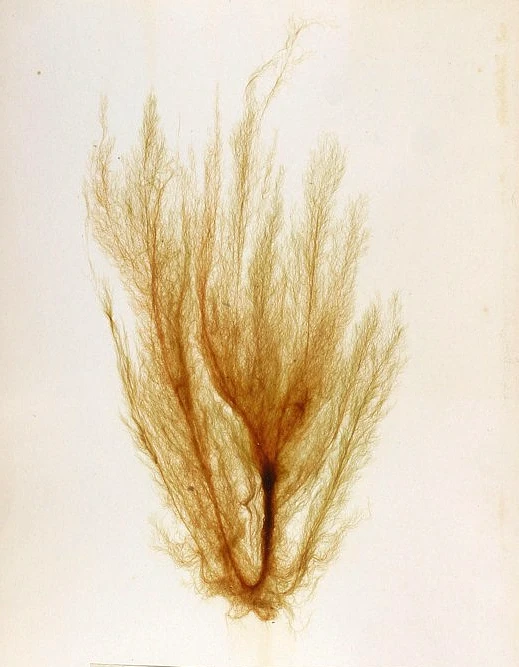Contents
ECTOCARPUS
CLASSIFICATION OF ECTOCARPUS
Sub-division :- Algae
Class :- Phaeophyceae
Order :- Ectocarpales
Family :- Ectocarpaceae
Genus :- Ectocarpus
Ectocarpus occurs in marine habitat the world over, mostly along the coasts of colder seas. It also grows along the Indian coasts and forms brown tufts attached to rocks and large kelps in littoral and sublittoral regions.

EXTERNAL FEATURES OF THALLUS
- Thallus is multicellular, filamentous and branched.
- Filaments are heterotrichous and differentiated into
- prostrate portion and
- an erect portion.
- In some species prostrate portion is irregularly and profusely branched or altogether absent. If present it remains attached to the
- Erect portion is a crowded tuft of branches. Main axis is broad from which lateral branches arise just beneath the septum and taper into a point. Ultimate branches give an appearance of a hair.
- The branches and the main axis are uniseriate.
- The erect branches have intercalary meristem just below the terminal hair. It results in trichothallic growth.
- The cells are squarish to cylindrical and uninucleate.
- The cell wall is double layered. Outer is gelatinous and inner is firm and cellulosic.
- There may be one or many chromatophores varying from irregular to band-like to discoid. Pyrenoids are absent.
- Reserve food products occur as shining fucosan granules.
- The cell is filled with cytoplasm in which lies a single nucleus.

UNILOCULAR SPORANGIUM OF ECTOCARPUS

- Unilocular sporangium is a structure of asexual reproduction, always present on diploid plants.
- The sessile or stalked sporangium is situated terminally on lateral branches.
- The shape varies from globose to ellipsoidal.
- It is single celled and uninucleate when young but becomes multinucleate later.
- Many biflagellate zoospores are produced when unilocular sporangium matures.

PLURILOCULAR SPORANGIUM OF ECTOCARPUS
- These occur on both haploid and diploid plants.
- The structure when borne by haploid plant serves as a gametangium whereas on diploid plant it functions as a sporangium.
- Sporangia situated laterally may be sessile or stalked. These may be ovate to siliquose.
- Plurilocular sporangium is divided into large number of cells.
- A mature sporangium produces biflagellate swarmers, one each from every cell.
- If plurilocular sporangium is borne on a haploid plant, the swarmers behave as gametes and if borne on diploid plant, these act as haploid zoospores. (It is, therefore, suggested that instead of plurilocular sporangium it be called as neutral sporangium when zoospores are produced and spores as neutral spores and if it produces gametes on a haploid plant, it should be called gametangium and swarmers as gametes). The life cycle exhibits typical alternation of generations (isomorphic).

IDENTIFICATION
- Sub-division– Algae
- Presence of a simple thallus.
- Chlorophyll present
- Cell wall made of cellulose.
- Class – Phaeopbyceae
- Yellowish-brown chromatophores.
- Photosynthetic reserve-Iaminarin and mannitol.
- Motile reproductive cell-pyriform and flagellated
- Flagella laterally inserted and unequal.
- Order – Ectocarpales
- Thallus filamentous.
- Growth trichothallic
- Reproductive organs-unilocular and plurilocular sporangia.
- Isomorphic alternation of generations
- Family – Ectocarpaceae
- Thallus monoaxial, branched, branches uniseriate.
- Growth trichothallic.
- Sporophytes with uni- or plurilocular sporangia, terminal or intercalary.
- Genus – Ectocarpus
- Chromatophores discoid or band-shaped.
- Pyrenoids absent.
- Reproductive parts terminal, stalked.

REFERENCES :-


Leave a Reply